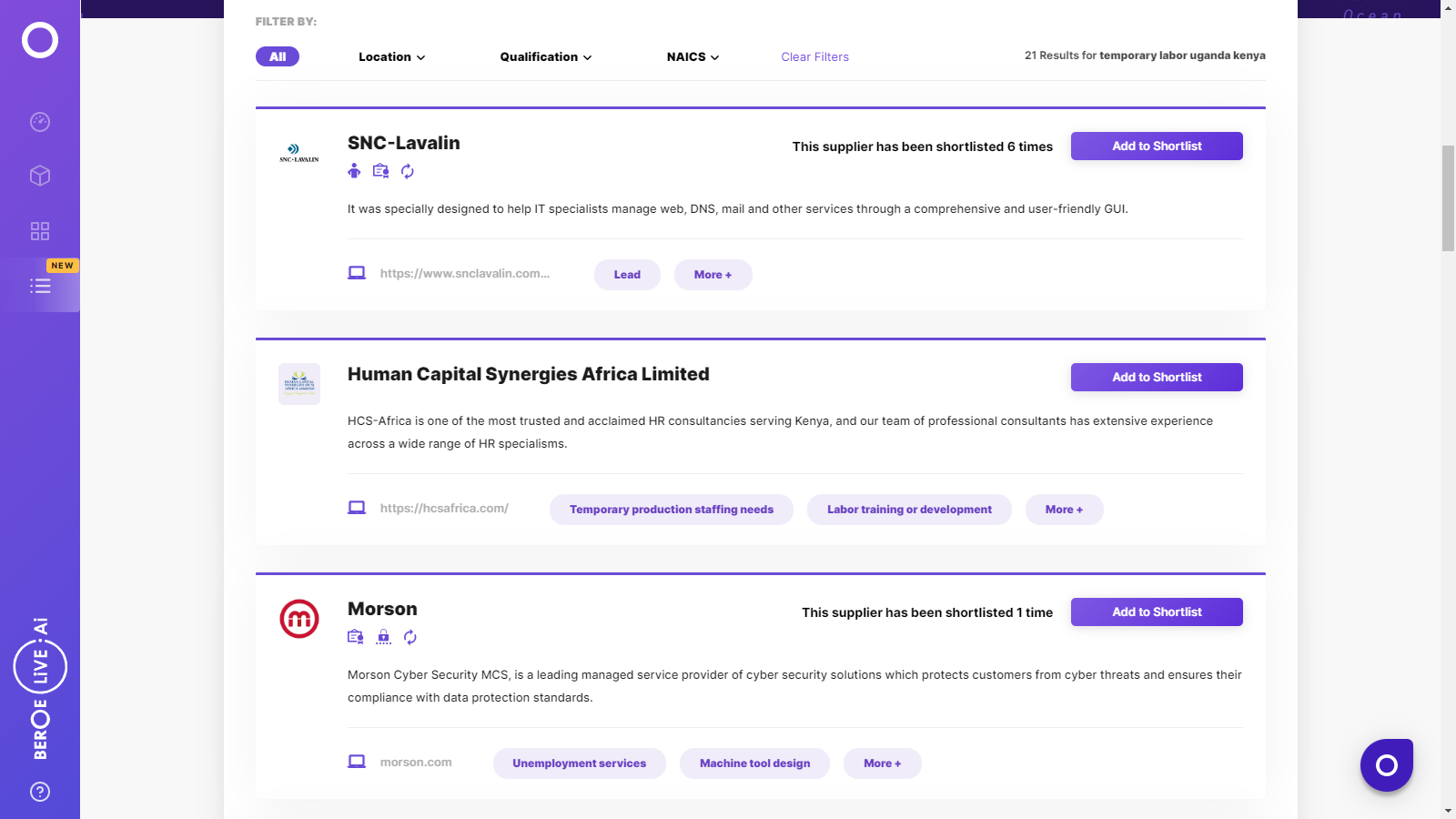CATEGORY
Temporary Labor In Uganda And Kenya
Organisations have been increasingly depending on temporary workforce across the globe to fullfill interim workforce requirements and ensure that the operations run smooth. Temporary workforce is being used not only used for blue collar or low skilled jobs but are also depend for niched and technicla roles where it is difficult to source permanent talent. This report highlights the key service providers that support sourcing temporary workforce in Uganda and Kenya and best practices
Beroe LiVE.Ai™
AI-powered self-service platform for all your sourcing decision needs across 1,200+ categories like Temporary Labor In Uganda And Kenya.
Market Data, Sourcing & Supplier Intelligence, and Price & Cost Benchmarking.
Schedule a DemoThe World’s first Digital Market Analyst
Abi, the AI-powered digital assistant brings together data, insights, and intelligence for faster answers to sourcing questions
Abi is now supercharged with GPT4 AI engine. Enjoy the ease of ChatGPT, now on Abi
Temporary Labor In Uganda And Kenya Suppliers

Find the right-fit temporary labor in uganda and kenya supplier for your specific business needs and filter by location, industry, category, revenue, certifications, and more on Beroe LiVE.Ai™.
Schedule a Demo


Use the Temporary Labor In Uganda And Kenya market, supplier and price information for category strategy creation and Quaterly Business Reviews (QRBs)
Schedule a DemoTemporary Labor In Uganda And Kenya market report transcript
Regional Market outlook on Temporary Labor
Kenya is characterized by a large presence of informal employment sector in the economy, which contributes close to 83.4 percent of the total employment. The growth of the informal job market can be attributed to poor labor regulations present in the economy, which makes it easy for people to enter and exit the market.
- The informal sector contributes close to 83.4 percent of the total employment
- Close to 88 percent of the new jobs created fall under the informal employment category and increased by 5 percent compared to the last year
- A major part of the informal sector employment lies in wholesale & retail trade and hotels & restaurants' economic activity category, which accounts for close to 60 percent
- Transport & communication accounts for only 3.12 percent of the total informal sector
- The informal sector employment grew by 6 percent in 2017 compared to the last year, indicating the increasing adoption of informal employment across the country
- Rural areas accounted for two-third of the total jobs in the informal sector, which means that labor supply is high in rural areas
Market Overview: Uganda
The Uganda's labor market is also majorly comprised of the informal sector, and the presence of trade unions poses a challenge for employers, as they demand for wage increment.
- The unemployment rate is low, yet the youth are the major segment forming the unemployed category
- Agriculture is the main employing sector, which contributes to 27 percent of the economy's GDP
- Due to lack of job opportunities within the domestic country, most of the working people migrate to the Middle Eastern countries in search of jobs
- The labor market is fragmented, in terms of formal employment, where an estimation of one out of ten people falls into the category
- There are close to 52 trade unions, which has a membership of approximately 550,000 workers, which are responsible for increasing wages across various industries
- It is expected that demand will be high for forklift truck driver, warehouse operative and warehouse supervisor, as the country moves towards an efficiency-driven middle income economy by 2030
Opportunities for Consolidation of Spend
Global companies have an opportunity for consolidation of spend by bundling services, such as temporary staffing and permanent recruitment in a region. As a result, companies attain volume discount of 5–7 percent by bundling different services of HR.
- Global companies have found it challenging to bundle contingent along with permanent staffing services
- The buy-in and execution for contingent staffing is carried out by the procurement team, whereas for HR, it is directly involved in permanent staffing, hence requiring limited involvement from procurement
- The HR team have attained volume discounts of 10–12 percent by bundling contingent and permanent staffing
Interesting Reads:
Discover the world of market intelligence and how it can elevate your business strategies.
Learn more about how market intelligence can enable informed decision-making, help identify growth opportunities, manage risks, and shape your business's strategic direction.
Get Ahead with AI-Enabled Market Insights Schedule a Demo Now
